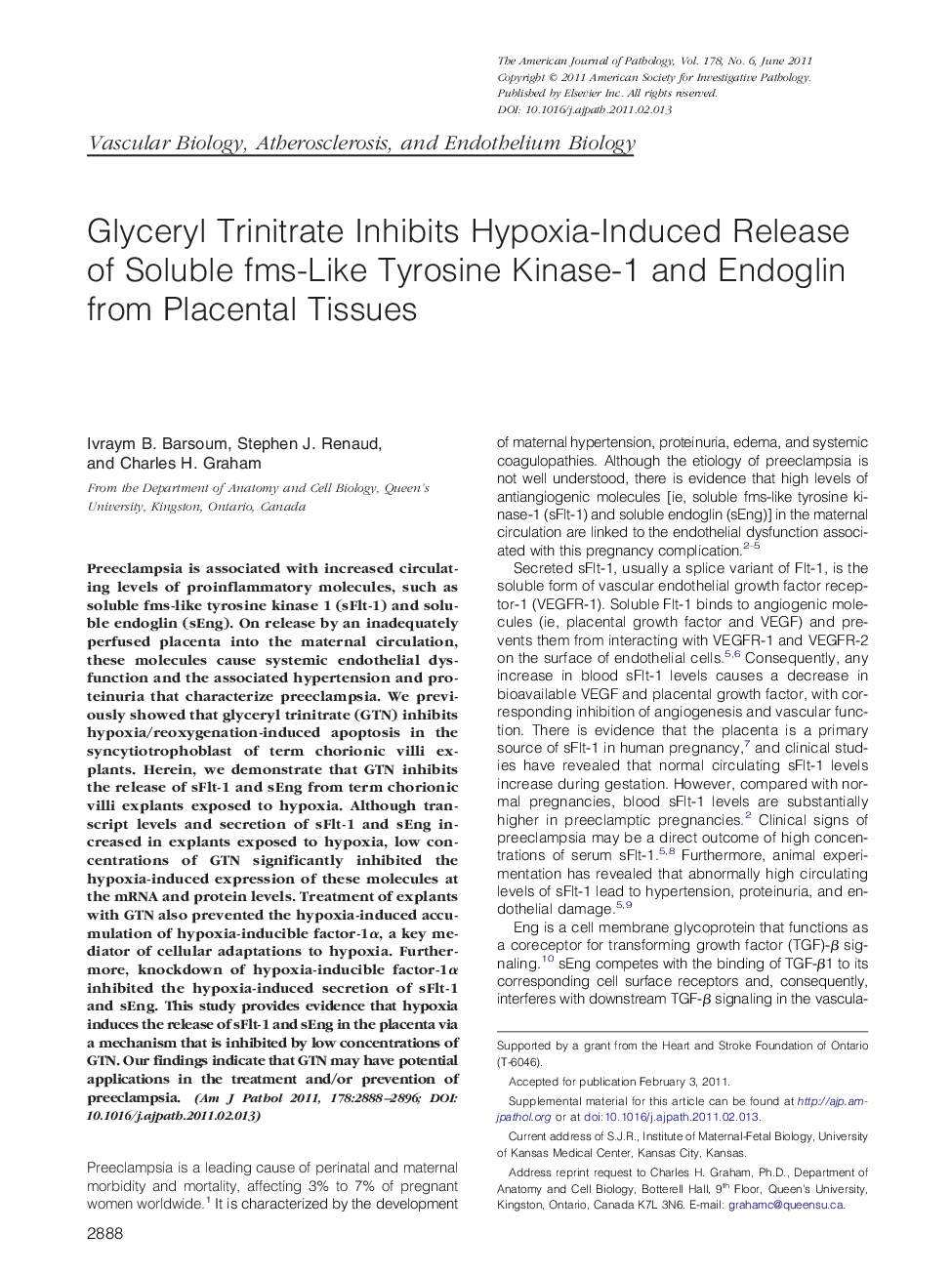| Article ID | Journal | Published Year | Pages | File Type |
|---|---|---|---|---|
| 5939551 | The American Journal of Pathology | 2011 | 9 Pages |
Preeclampsia is associated with increased circulating levels of proinflammatory molecules, such as soluble fms-like tyrosine kinase 1 (sFlt-1) and soluble endoglin (sEng). On release by an inadequately perfused placenta into the maternal circulation, these molecules cause systemic endothelial dysfunction and the associated hypertension and proteinuria that characterize preeclampsia. We previously showed that glyceryl trinitrate (GTN) inhibits hypoxia/reoxygenation-induced apoptosis in the syncytiotrophoblast of term chorionic villi explants. Herein, we demonstrate that GTN inhibits the release of sFlt-1 and sEng from term chorionic villi explants exposed to hypoxia. Although transcript levels and secretion of sFlt-1 and sEng increased in explants exposed to hypoxia, low concentrations of GTN significantly inhibited the hypoxia-induced expression of these molecules at the mRNA and protein levels. Treatment of explants with GTN also prevented the hypoxia-induced accumulation of hypoxia-inducible factor-1α, a key mediator of cellular adaptations to hypoxia. Furthermore, knockdown of hypoxia-inducible factor-1α inhibited the hypoxia-induced secretion of sFlt-1 and sEng. This study provides evidence that hypoxia induces the release of sFlt-1 and sEng in the placenta via a mechanism that is inhibited by low concentrations of GTN. Our findings indicate that GTN may have potential applications in the treatment and/or prevention of preeclampsia.
